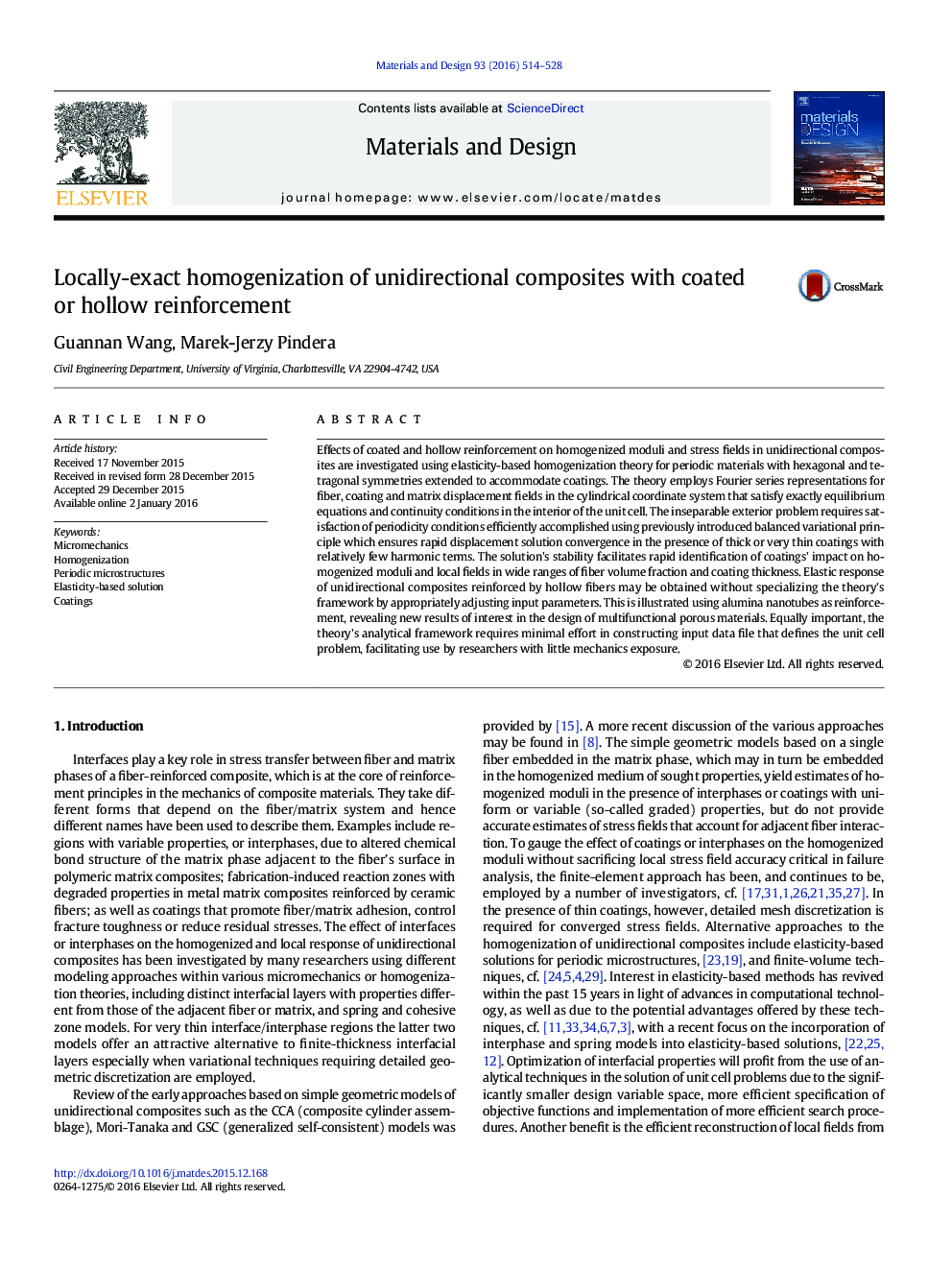| Article ID | Journal | Published Year | Pages | File Type |
|---|---|---|---|---|
| 828211 | Materials & Design | 2016 | 15 Pages |
•An elasticity-based homogenization theory is extended to accommodate coated reinforcement.•Rapid solution convergence is obtained in the presence of both thick and very thin coatings.•Rigorous validation of the theory is carried out through demanding examples and published data.•Effects of coating stiffness and thickness on homogenized moduli and stress fields are illustrated for hexagonal and square symmetries.•New results of interest in the design of multifunctional porous materials are obtained.
Effects of coated and hollow reinforcement on homogenized moduli and stress fields in unidirectional composites are investigated using elasticity-based homogenization theory for periodic materials with hexagonal and tetragonal symmetries extended to accommodate coatings. The theory employs Fourier series representations for fiber, coating and matrix displacement fields in the cylindrical coordinate system that satisfy exactly equilibrium equations and continuity conditions in the interior of the unit cell. The inseparable exterior problem requires satisfaction of periodicity conditions efficiently accomplished using previously introduced balanced variational principle which ensures rapid displacement solution convergence in the presence of thick or very thin coatings with relatively few harmonic terms. The solution's stability facilitates rapid identification of coatings' impact on homogenized moduli and local fields in wide ranges of fiber volume fraction and coating thickness. Elastic response of unidirectional composites reinforced by hollow fibers may be obtained without specializing the theory's framework by appropriately adjusting input parameters. This is illustrated using alumina nanotubes as reinforcement, revealing new results of interest in the design of multifunctional porous materials. Equally important, the theory's analytical framework requires minimal effort in constructing input data file that defines the unit cell problem, facilitating use by researchers with little mechanics exposure.
Graphical abstractFigure optionsDownload full-size imageDownload as PowerPoint slide
